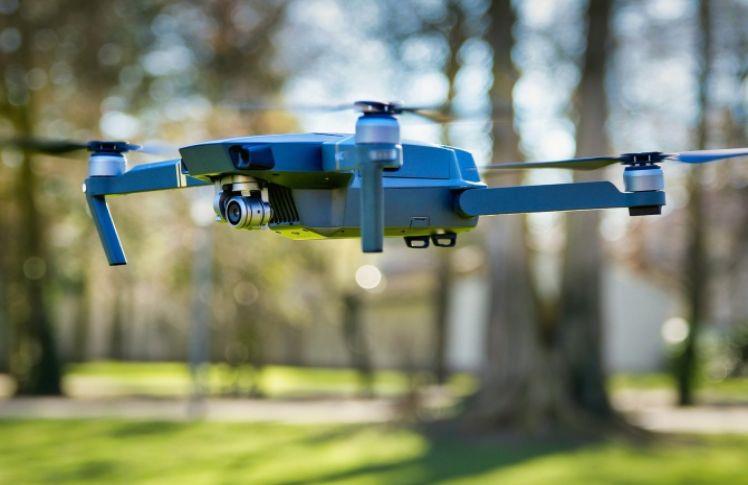
Drones have revived the cross border smuggling of weapons and drugs as Punjab arms and drug smugglers are now sourcing the high-end GPS fitted drones from the free classified websites like OLX.
Security agencies don't have more than a few minutes to intercept drones being frequently used by narco-terror gangs to smuggle drugs or weapons in Punjab. The two drones recovered from a gang of narcotics smugglers, including an Army jawan, recently were sophisticated DJI Inspire 2 and DJI Matrice quad-copters, which are known for their fast speed (90 kmph) and quiet operation.
These drones attain this speed with-in seconds of their launch. Rahul Chauhan from Ambala, Naik with Army, was caught along with two Amritsar residents and smugglers Dharminder Singh and Balkar Singh on Friday.
The police have arrested four other members of the gang, but the alleged kingpin Ajay Pal is still absconding. The Inspire model, available online for around Its 3 Lakh per piece, is a Chinese manufactured product which is better used by filmmakers in Hollywood and elsewhere due to its excellent video camera and still photography results.
Its use for fetching drugs from across the border by Punjab smugglers has thrown up a new challenge for the security forces. The battery of Inspire drones allows around 27-minute air-time during which these can fly up to 7 km. The Matrice model has an airtime of 35-38 minutes. While DJI Inspire drone can carry a payload of up to 5 kg, the Matrice model can carry 7-9 kg payload. These drones are fitted with intelligent return software that allows them to return to the base even when the contact with them is lost. According to police officials, the payload is usually made to hang from the drone using a string.
This obviates the need to land the drone for delivering a payload, thus considerably reducing the risk of a crash or seizure. The payload is gathered manually at the intended destination. Sources said one drone sortie carrying 5 kg heroin can fetch anything between Its 5 crore to Its 25 crore for smugglers in the local and international market, respectively. The Punjab Police and the BSF look forward to acquiring equipment developed by Israel to check such sorties.
According to industry estimates, there are over 500,000 illegal or smuggled drones in India.
The large scale influx of such flying devices is a security concern for intelligence agencies while being a physical hazard for citizens, especially in areas around airports and highly populated public spaces.
The Director-General of Civil Aviation has just notified the rules for flying drones, but there is a lack of appreciation among other government agencies.
Smuggled UAVs fly without registration and, therefore, accountability.
Drone operators, flyers and companies that map the data that is generated even for genuine purposes may be unwittingly using illegal machines.
A key way to curb the use of illegal flying vehicles is to improve controls at our borders.
Drones come in varying sizes and can have tremendous surveillance capabilities built into them.
The long term solution for India is to encourage the manufacturing of drones within the country.
"The government should encourage the use of indigenously made tracking systems for drones.
"This is at the core of monitoring and regulating the use of aerial flying machines in the country," says Sai Pattabiram, founder & managing director of Chennai-based Sree Sai Aerotech Innovations.
A drone consists of four sub-systems.
First is the frame.
The second is the power system that includes the motor, propellers, battery and speed manager.
The third is the control systems, the nerve center of the drone, effectively the brain of the drone that navigates and manages the activity that it has been designed for.
The fourth is the payload itself which could be a camera or a package meant for delivery.
India may not be able to make everything, but it should plan to develop an ecosystem that encourages domestic manufacturing of critical technology.
It will be also important for regulatory bodies to invest in their understanding of rapidly developing new technologies.
Since India has been able to achieve such self-reliance in space technology, hope for domestic hardware manufacturing is not out of place.
India should give this as much importance as enhancing the domestic defense industry.
Geo-political muscle is not just about warplanes and submarines.
As China has shown, India must also invest in its technological muscle.
Leave a comment: (Your email will not be published)